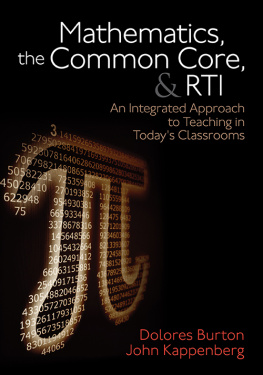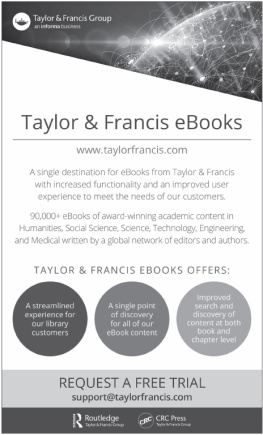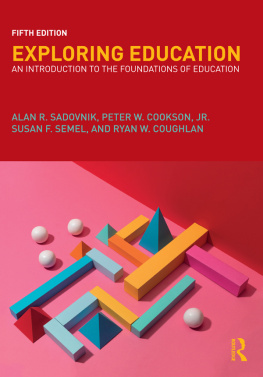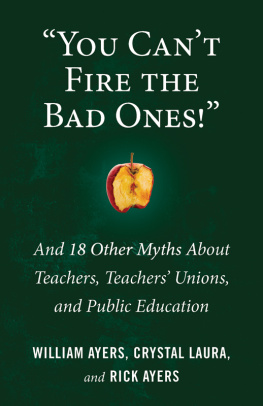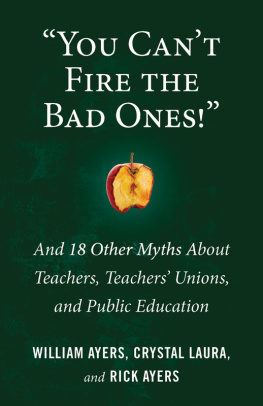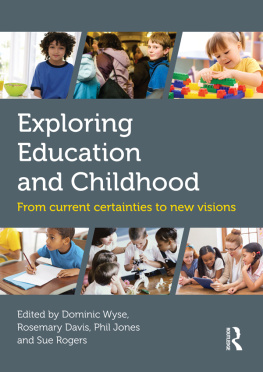
Table of Contents
List of Figures
- CHAPTER ONE: Introduction
- CHAPTER TWO: Theories of Learning and Their Roles in Teaching
- CHAPTER SIX: Teaching Subject Matter
- CHAPTER EIGHT: Assessment
- CHAPTER TEN: How Teachers Learn and Develop
List of Tables
- CHAPTER FOUR: Enhancing the Development of Students Language(s)
- CHAPTER EIGHT: Assessment
Landmarks
Pages
Preparing Teachers for a Changing World
What Teachers Should Learn and Be Able to Do
Sponsored by the National Academy of Education
Edited by
Linda Darling-Hammond
John Bransford
In Collaboration with
Pamela LePage
Karen Hammerness
Helen Duffy
Copyright 2005 by John Wiley & Sons, Inc. All rights reserved.
Published by Jossey-Bass
A Wiley Imprint
989 Market Street, San Francisco, CA 94103-1741 www.josseybass.com
No part of this publication may be reproduced, stored in a retrieval system, or transmitted in any form or by any means, electronic, mechanical, photocopying, recording, scanning, or otherwise, except as permitted under Section 107 or 108 of the 1976 United States Copyright Act, without either the prior written permission of the Publisher, or authorization through payment of the appropriate per-copy fee to the Copyright Clearance Center, Inc., 222 Rosewood Drive, Danvers, MA 01923, 978-750-8400, fax 978-750-4470, or on the web at .
Limit of Liability/Disclaimer of Warranty: While the publisher and author have used their best efforts in preparing this book, they make no representations or warranties with respect to the accuracy or completeness of the contents of this book and specifically disclaim any implied warranties of merchantability or fitness for a particular purpose. No warranty may be created or extended by sales representatives or written sales materials. The advice and strategies contained herein may not be suitable for your situation. You should consult with a professional where appropriate. Neither the publisher nor author shall be liable for any loss of profit or any other commercial damages, including but not limited to special, incidental, consequential, or other damages.
Jossey-Bass books and products are available through most bookstores. To contact Jossey-Bass directly call our Customer Care Department within the U.S. at 800-956-7739, outside the U.S. at 317-572-3993 or fax 317-572-4002.
Jossey-Bass also publishes its books in a variety of electronic formats. Some content that appears in print may not be available in electronic books.
Library of Congress Cataloging-in-Publication Data:
Preparing teachers for a changing world : what teachers should learn and be able to do / edited by Linda Darling-Hammond and John Bransford in collaboration with Pamela LePage, Karen Hammerness, and Helen Duffy ; sponsored by the National Academy of Education. 1st ed.
p. cm.
Includes bibliographical references and index.
ISBN-13 978-0-7879-7464-0 (alk. paper)
ISBN-10 0-7879-7464-1 (alk. paper)
ISBN-13 978-0-7879-9634-5 (paperback)
ISBN-10 0-7879-9634-3 (paperback)
1. TeachersTraining ofUnited States. 2. Follow-up in teacher trainingUnited States.
3. TeachersIn-service trainingUnited States. I. Darling-Hammond, Linda, 1951.
II. Bransford, John. III. National Academy of Education.
LB1715.P733 2005
370'.7'1dc22
2004026736
The Jossey-Bass Education Series contents
PREFACE
All professions at some point in their development have worked to achieve consensus about the key elements of a professional education curriculum: the building blocks of preparation for all entrants into the occupation. In medicine, this happened at the turn of the twentieth century following the release of the famous Flexner Report that critiqued the uneven quality of medical education. Efforts to create a common curriculum for legal education followed shortly thereafter. Fields like engineering and architecture turned to this work in the mid-1900s. Over the last two decades, the teaching profession has begun to codify the knowledge base for professional practice and standards for the work of practitioners.
Meanwhile, great strides have been made in our understanding of learning and the teaching practices that support it. Over the last two years, the National Academy of Education, through its Committee on Teacher Education (CTE), has been considering the implications for the curriculum of teacher education of what the field has learned about effective learning and teaching, as well as about the learning of teachers.
This volume is the result of the Committees work. It outlines core concepts and strategies that should inform initial teacher preparation, whether it is delivered in traditional or nontraditional settings. It is intended primarily for those who are responsible for the preparation of teachers: deans and faculty members in university-based programs as well as district personnel and school-based faculty in cooperating schools or alternative programs. A shorter summary volume is aimed at policymakers as well as practitioners. A companion volume examines the curricular implications of knowledge for teaching reading, as an initial effort to instantiate these recommendations in a content field. The Committee chose reading for this initiative because there is already a substantial body of research about how students learn to read, and a growing consensus about professional practice in the teaching of early reading upon which teacher education curriculum could be built.
This work stands on the shoulders of many other efforts. In 1989, the American Association of Colleges for Teacher Education published a seminal effort, the Knowledge Base for the Beginning Teacher, and followed this up with the Teacher Educators Handbook in 1996. The National Board for Professional Standards (NBPTS), established in 1987, built on research about learning and teaching in developing standards articulating what expert teachers should know and be able to do. Additionally, the Interstate New Teacher Assessment and Support Consortium (INTASC), a consortium of state education agencies, higher education institutions, and national educational organizations, developed model standards and assessments for licensing beginning teachers that rest on the same body of research. Together these efforts create a continuum of expectations from beginning teaching to accomplished levels of practice.
These standards have become widespread. They have been incorporated into the teacher education accreditation standards of the National Council for the Accreditation of Teacher Education, and, according to a recent survey, most teacher education institutions have used these national and state standards to ground the foundation for their program designs and for teacher education outcome measures (Salzman, Denner, & Harris, 2002).
This reports recommendations are informed by these professional standard-setting initiatives and by important research compilations, such as the National Research Councils 1999 Report, How People Learn, which provides a comprehensive overview about what is known in the area of learning; the several Handbooks of Research on Teaching, sponsored by the American Educational Research Association; and the Handbooks of Research on Teacher Education,
Next page


